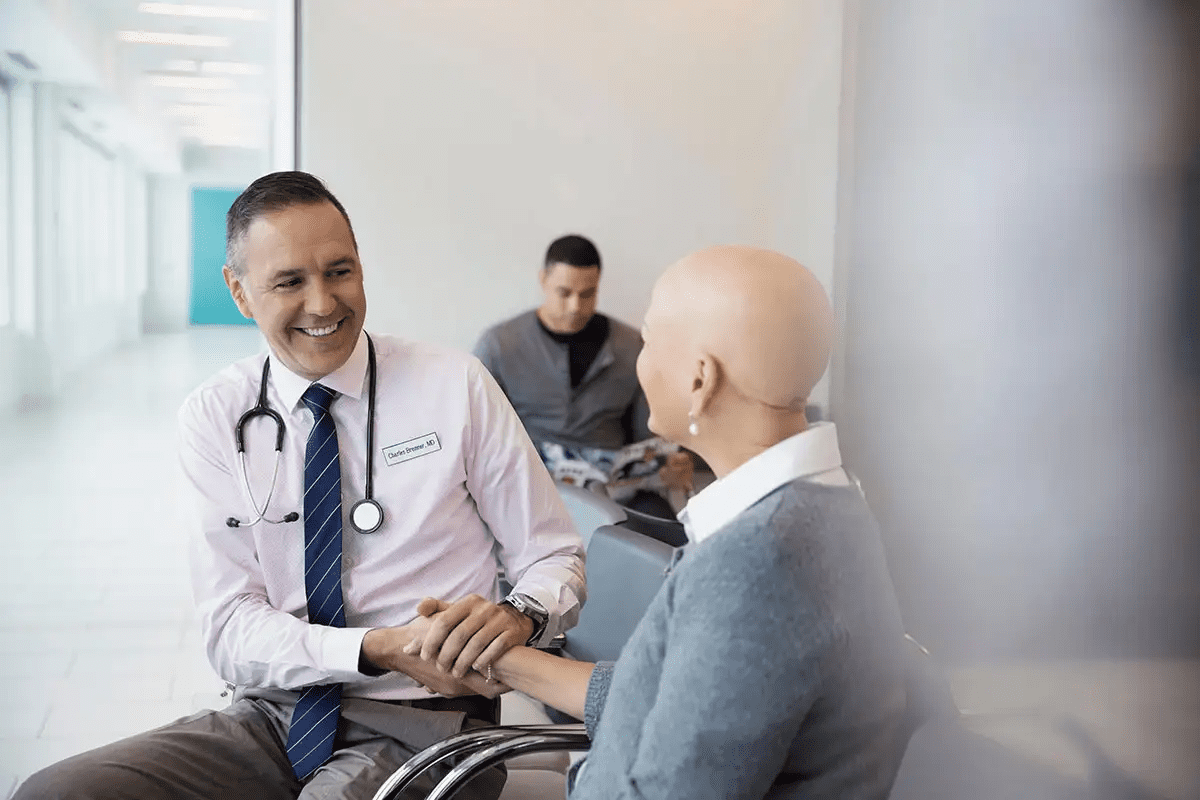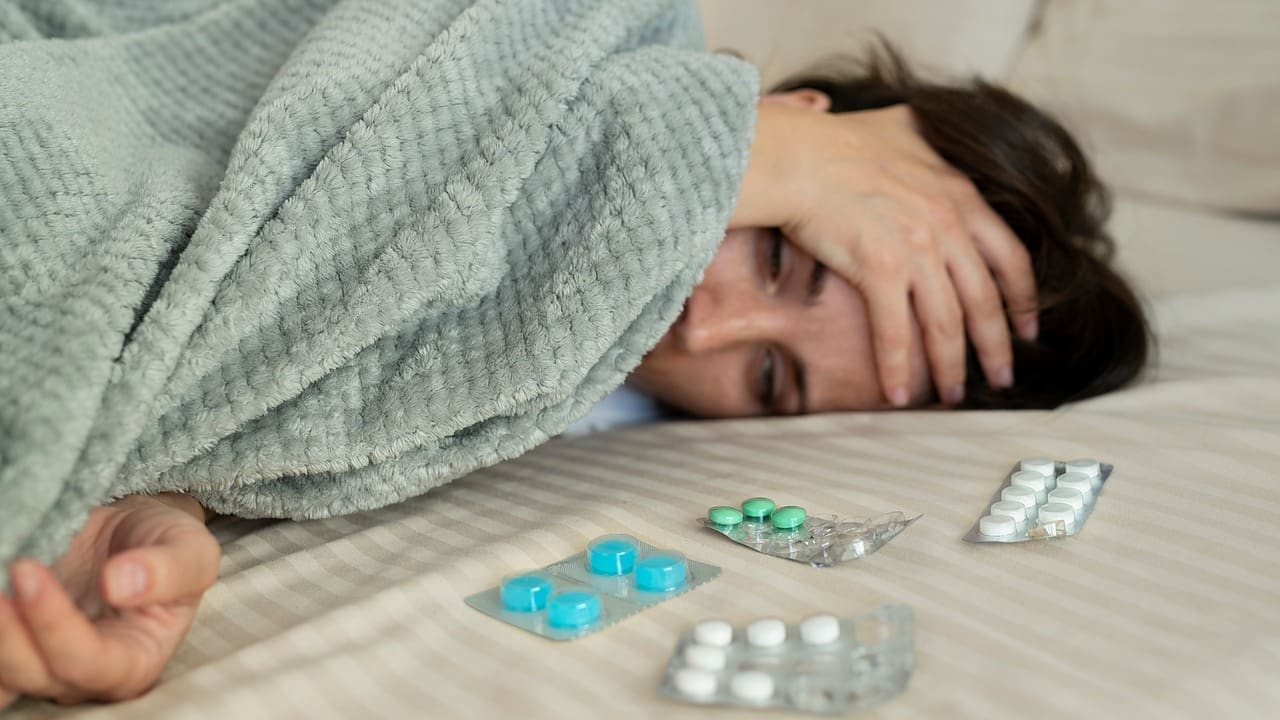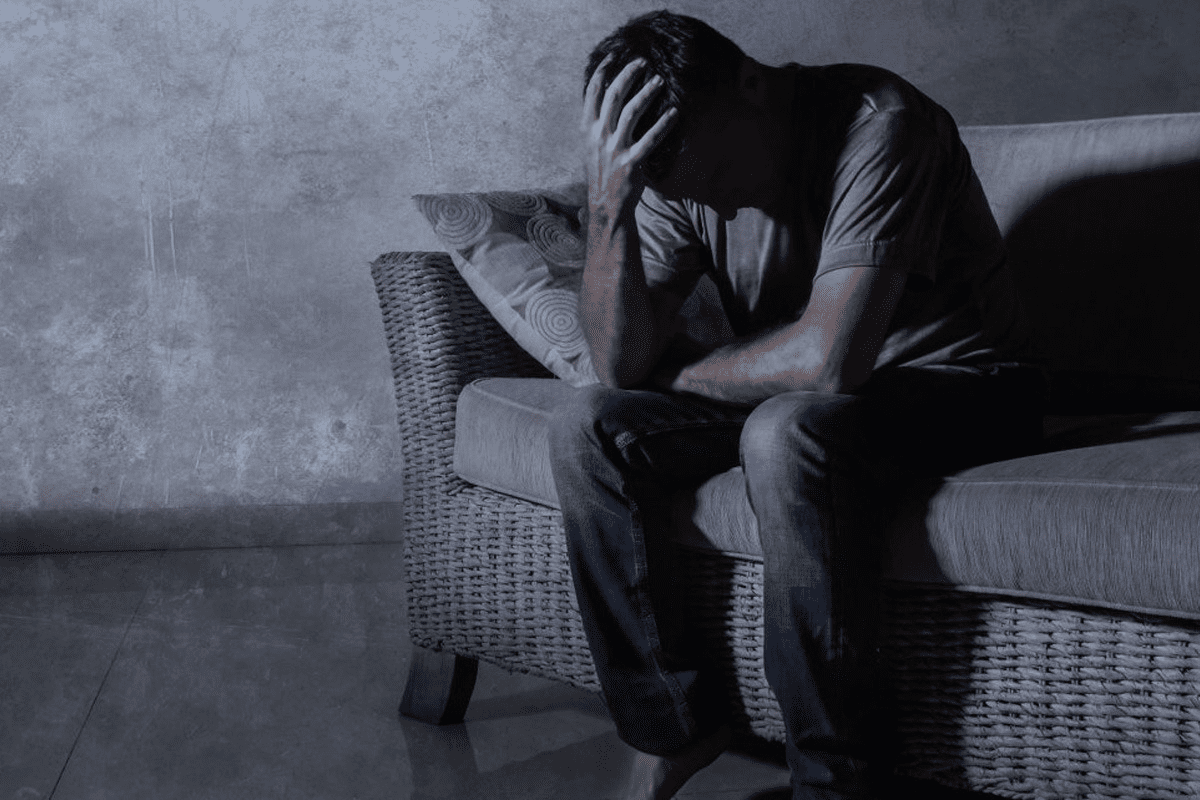Last Updated on November 27, 2025 by Bilal Hasdemir
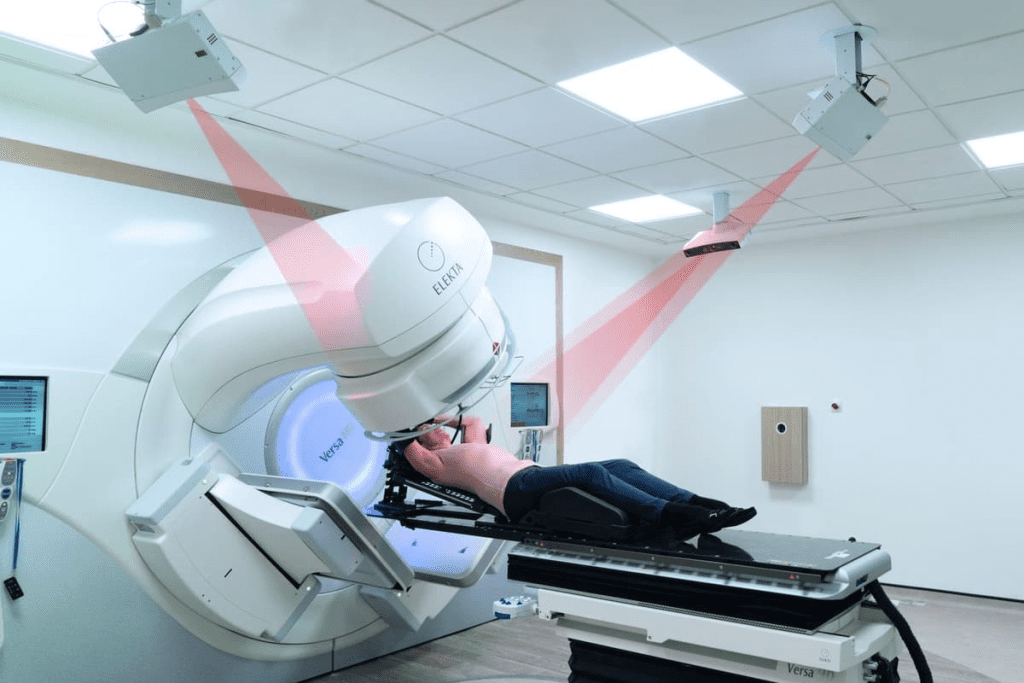
Radiation therapy is a common way to treat cancer. It uses high-energy particles or waves to kill or damage cancer cells. However, radiation therapy also has significant drawbacks, as many patients experience side effects that negatively impact their quality of life, commonly referred to as the after effects of radiotherapy. These after effects can vary depending on the treatment area and may include fatigue, skin changes, and other symptoms that require management and care.
Even though radiation therapy can be very effective against cancer, its drawbacks are important to remember. These include radiation side effects that can be mild or very severe. The type and amount of radiation used can affect how bad these side effects are.
Key Takeaways
- Radiation therapy has several disadvantages, including significant side effects.
- The side effects of radiation therapy can impact a patient’s quality of life.
- The severity of side effects varies depending on the type and dosage of radiation.
- Understanding the disadvantages of radiation is key for patients.
- Radiation therapy side effects can be a big worry for cancer patients.
Understanding Radiation Therapy and Its Purpose
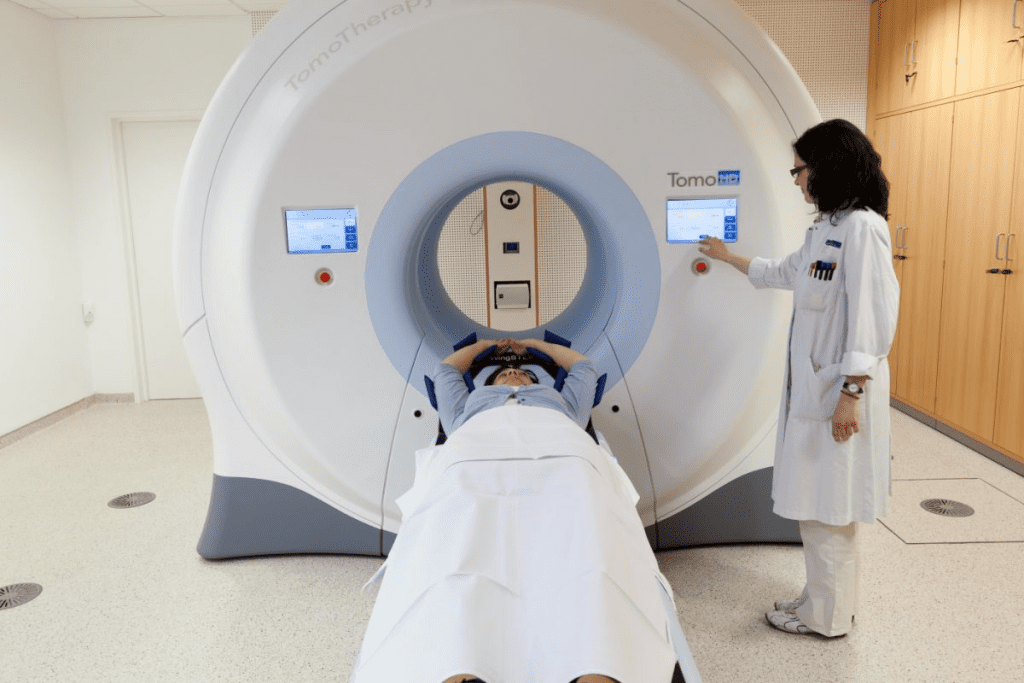
Cancer treatment often includes radiation therapy. This method uses high-energy particles or waves to kill cancer cells. It’s a key part of cancer care, aiming to destroy cancer cells while keeping healthy tissue safe.
Radiation therapy damages cancer cells’ DNA, stopping them from growing. It uses high-energy radiation. This can come from outside the body or be placed near the tumor for brachytherapy.
How Radiation Therapy Works
Radiation therapy ionizes cells, causing them to die or stop growing. It’s most effective on fast-growing cancer cells. These cells are more likely to be damaged by radiation than normal cells.
External Beam Radiation Therapy (EBRT) uses a machine outside the body. It targets the tumor from different angles. This method helps focus radiation on the tumor while protecting nearby tissues.
Types of Radiation Treatments
There are many types of radiation therapy, each suited to different patients and tumors. Internal radiation therapy, or brachytherapy, places radioactive material close to the tumor. This method delivers high doses of radiation directly to the cancer.
- External Beam Radiation Therapy (EBRT): Delivers radiation from outside the body.
- Brachytherapy: Involves placing radioactive material inside or near the tumor.
- Stereotactic Body Radiation Therapy (SBRT): Delivers precise, high doses of radiation to tumors in a few fractions.
Common Cancer Types Treated with Radiation
Radiation therapy is used for many cancers, like prostate, breast, lung, and brain tumors. The choice to use radiation depends on the cancer type, stage, and location, and the patient’s health.
For example, radiation therapy is common for prostate cancer. It targets the prostate gland with precise doses. Breast cancer patients might get radiation after surgery to kill any leftover cancer cells.
Common Physical Side Effects of Radiation Therapy
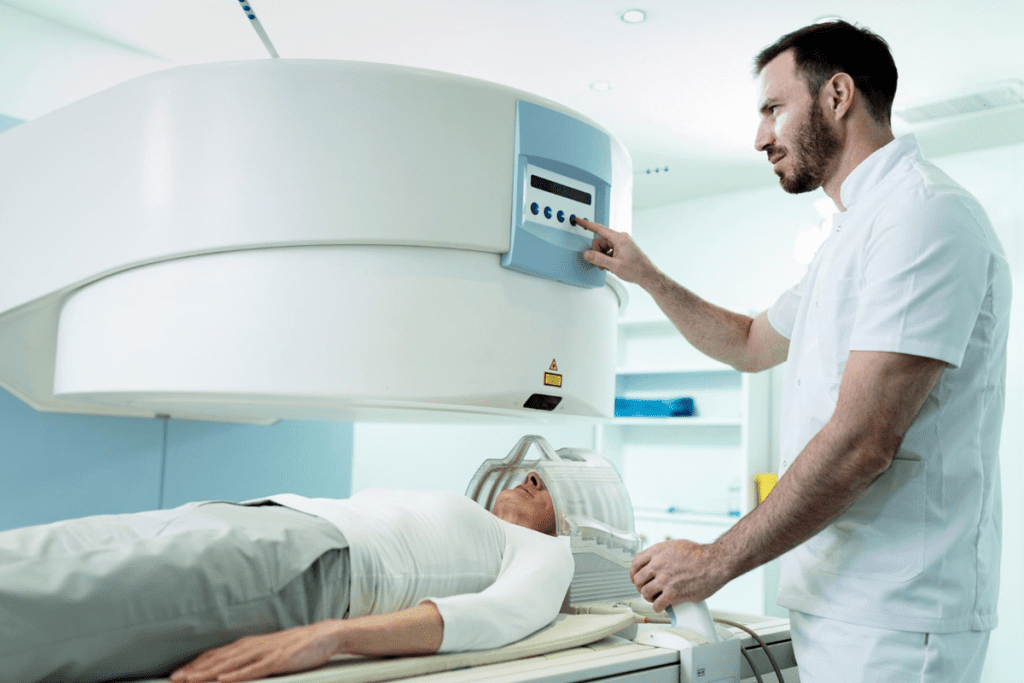
Radiation therapy is a common treatment for many cancers. It can cause several physical side effects. These symptoms vary based on the treatment area and dosage.
Skin Changes and Irritation
One common side effect is skin changes and irritation. The treated area may turn red, feel irritated, and be sensitive like a sunburn. The skin might also dry out, peel, or darken. Proper skin care is key to reducing these effects and aiding healing.
Nausea and Digestive Issues
Nausea and digestive problems are common, mainly when the abdomen is treated. Patients might feel nauseous, vomit, have diarrhea, or lose their appetite. Managing these symptoms often involves changing diets and sometimes taking medication to fight nausea and prevent dehydration.
Pain and Discomfort
Pain and discomfort can happen due to radiation therapy. This pain can be direct or caused by secondary effects like inflammation. It’s important for patients to tell their healthcare team about their pain to get the right pain management.
Swelling and Inflammation
Swelling and inflammation are common, mainly in areas with sensitive tissues. This swelling can cause discomfort and sometimes affect how the area works. Elevating the affected area and following the healthcare team’s advice can help lessen these effects.
Knowing about these common side effects can help patients prepare and manage their symptoms better. By working closely with their healthcare team, patients can reduce the impact of these side effects and have a better treatment experience.
Fatigue and Energy Depletion
Many patients feel very tired during and after radiation therapy. This is called radiation fatigue. It affects their physical, emotional, and mental health.
Why Radiation Makes You Tired
Radiation therapy targets fast-growing cancer cells. But it also hits healthy cells, like those in the bone marrow. This makes the body tired. Radiation fatigue is not just physical; it also affects the mind and emotions.
The level of tiredness depends on the radiation dose and where it’s applied. For example, treatments in the pelvic area can cause more fatigue than those in the head or neck.
Duration of Post-Radiation Fatigue
How long post-radiation fatigue lasts varies. Some people feel better a few weeks after treatment. Others may stay tired for months or more.
Research shows that radiation therapy can lead to long-lasting fatigue. Recovery time depends on the patient’s health, other medical conditions, and the type of radiation therapy.
Managing Energy Levels During Treatment
It’s important to manage energy during radiation therapy. Patients should pace themselves and take breaks to avoid getting too tired. Conserving energy for important tasks and doing gentle exercises helps.
Eating a balanced diet is also key. Foods rich in fruits, vegetables, whole grains, and lean proteins help keep energy up. Drinking plenty of water is also essential.
Working with a healthcare team is vital. They can offer personalized advice on managing radiation fatigue. This might include medical interventions or lifestyle adjustments based on the individual’s needs.
Hair Loss and Appearance Changes
Patients getting radiation therapy worry about how it will change their looks, mainly hair loss. Hair loss is common if the treatment area is the head or neck.
Does Radiation Therapy Make You Lose Your Hair?
Radiation therapy can cause hair loss in the treated area. How much hair is lost depends on the dose and where it’s applied.
Factors influencing radiation hair loss include:
- The area being treated
- The dose of radiation
- The duration of treatment
Differences Between Radiation and Chemotherapy Hair Loss
Hair loss from radiation therapy is different from chemotherapy. Chemotherapy can make hair fall out all over the body. But radiation therapy mainly affects the treated area.
Recovery and Regrowth Expectations
Often, hair loss from radiation therapy is not permanent. Hair usually starts growing back a few months after treatment stops. But how fast it grows back depends on the radiation dose and overall health.
| Timeframe | Hair Regrowth Expectations |
| 1-3 months post-treatment | Hair begins to regrow |
| 6-12 months post-treatment | Significant regrowth observed |
| 1-2 years post-treatment | Hair regrowth typically stabilizes |
Knowing about hair loss and appearance changes helps patients prepare for radiation therapy. It also helps them understand what to expect during recovery and regrowth.
After Effects of Radiotherapy: Long-Term Considerations
It’s important for patients and doctors to know about the long-term side effects of radiation therapy. This treatment is common for many cancers. It can affect the body in lasting ways.
Chronic Tissue Damage
Chronic tissue damage is a big concern after radiation therapy. This happens because radiation can cause scarring in the treated area. This scarring can lead to problems like reduced organ function or mobility issues, depending on where it is.
Secondary Cancer Risks
There’s also a risk of getting secondary cancers from radiation. While this risk is low, it’s something patients and doctors must think about. They need to weigh it against the benefits of treating the primary cancer.
Long-Term Recovery Timeline
The recovery timeline after radiation therapy varies. It depends on the dose and type of radiation, where it was applied, and the patient’s health. Some side effects might go away in a few months. Others can last years or even appear later.
Patients should keep up with their healthcare providers to manage long-term side effects. Knowing about these issues helps patients navigate their recovery. It also helps them make informed decisions about their care.
Radiation Side Effects by Cancer Type
Radiation therapy is a common treatment for many cancers. But, its side effects vary by cancer type. Knowing these differences helps patients prepare and make informed choices.
Side Effects of Radiation Therapy for Prostate Cancer
Prostate cancer patients may face urinary issues like frequent urination. They might also have bowel problems, such as diarrhea and rectal bleeding. Fatigue and erectile dysfunction are common, too. The severity of these side effects depends on the treatment’s dose and length.
Side Effects of Radiation Therapy for Breast Cancer
Breast cancer patients might see skin changes like redness and irritation. They could also feel tired and experience lymphedema, leading to arm or hand swelling. Proper treatment planning can help reduce these risks.
Side Effects of Radiation Therapy for Brain Tumors
Brain tumor patients might notice cognitive changes, like memory loss and trouble focusing. They could also feel tired, lose hair, and face radiation necrosis, where the brain tissue is damaged. The side effects’ severity depends on the radiation’s location and dose.
Side Effects of Radiation Therapy for Lung Cancer
Lung cancer patients might struggle with respiratory issues like coughing and shortness of breath. They could also feel tired, experience esophagitis, and develop pneumonitis, an inflammation of the lung tissue. Careful treatment planning can help lessen these risks.
It’s vital for patients to talk to their healthcare provider about their specific risks and benefits. This way, they can understand what to expect from radiation therapy.
Radiation’s Effect on Specific Body Systems
Radiation therapy can deeply affect different body systems, like the brain, digestive system, and skin. It’s key to understand these effects to manage side effects and improve patient outcomes.
Brain and Cognitive Function
Radiation to the brain can cause changes in memory, concentration, and speed of processing. These changes can be short-term or last a long time. Neurocognitive function can be impacted, affecting daily life and quality of life.
Cognitive rehabilitation and other therapies can help lessen these effects. It’s important to watch for cognitive changes in patients getting brain radiation. Then, the right interventions should be used as needed.
Digestive System Complications
Radiation to the abdomen or pelvis can cause digestive system complications, like nausea, diarrhea, and bowel obstruction. These issues happen because radiation can harm the intestines’ lining and affect bowel function.
Adjusting the diet and using medications can help manage these symptoms. Patients might need to follow a special diet. In some cases, nutritional supplements are recommended to ensure they get enough nutrients.
Bladder and Urinary Issues
Radiation to the pelvic area can cause bladder and urinary issues, such as needing to urinate often, urgently, or losing control. These symptoms can be upsetting and affect daily life.
Patients might benefit from pelvic floor physical therapy and other treatments to manage urinary symptoms. Medications can also be given to ease discomfort and improve bladder function.
Skin and Tissue Damage
Skin and tissue damage are common side effects of radiation therapy, mainly in areas where the radiation beam enters and exits the body. This can lead to skin irritation, fibrosis, and changes in skin color.
Proper skin care and wound management are vital to minimize these effects. Patients should learn how to care for their skin during and after radiation therapy. This helps with healing and reduces the risk of complications.
Psychological and Emotional Impact
Radiation therapy is more than just a physical challenge. It deeply affects a patient’s mind and emotions. The long and demanding treatment process impacts many areas of a patient’s life.
Anxiety and Depression During Treatment
Patients going through radiation therapy often feel more anxiety and depression. The worry about treatment results and physical side effects can really take a toll on their mental health.
Coping mechanisms like counseling, support groups, and relaxation techniques can help. It’s key for healthcare providers to include these in the treatment plan.
Body Image Concerns
Radiation therapy can change how a patient looks, like causing skin irritation or hair loss. These changes can hurt a patient’s body image. They can make a patient feel less confident and less about themselves.
Talking about these possible changes with healthcare providers before treatment can help. It lets patients prepare and find ways to deal with the emotional effects.
Coping Strategies for Emotional Well-being
It’s important to find good coping strategies to maintain emotional well-being during radiation therapy. This can include mindfulness, staying close to loved ones, and doing things that make you happy.
- Mindfulness and relaxation techniques
- Support groups and counseling
- Staying connected with family and friends
- Engaging in enjoyable activities
By using these strategies, patients can handle the emotional challenges of radiation therapy better.
Radiation Therapy vs. Chemotherapy: Comparing Treatments
It’s important to know the differences between radiation therapy and chemotherapy. Both are used to fight cancer, but they work differently and have different side effects.
Is Radiotherapy Worse Than Chemotherapy?
Whether radiation therapy is worse than chemotherapy depends on the situation. Radiation therapy uses high-energy rays to kill cancer cells in a specific area. On the other hand, chemotherapy uses drugs that travel through the body to kill cancer cells. The choice between them often depends on the cancer type and stage.
Some key differences include:
- Localized vs. Systemic Treatment: Radiation therapy targets a specific area, while chemotherapy affects the whole body.
- Side Effects: Both treatments have side effects, but they differ. Radiation therapy can cause skin irritation, while chemotherapy can lead to hair loss and nausea.
Combined Treatment Challenges
Some patients get both radiation therapy and chemotherapy. This can be tough because of the added side effects. For example, someone with breast cancer might get chemotherapy and then radiation to kill any remaining cancer cells.
The challenges of combined treatment include:
- Increased fatigue
- Higher risk of infection because of a weakened immune system
- Potential for more severe side effects like nausea and hair loss
Making Informed Treatment Decisions
Choosing the right cancer treatment means understanding your options. Patients should talk to their healthcare team to learn about the benefits and risks of each treatment.
Key considerations include:
- The type and stage of cancer
- The patient’s overall health and medical history
- Potential side effects and how to manage them
By considering these factors, patients can make choices that fit their needs and preferences.
Strategies to Minimize Radiation Side Effects
Managing radiation therapy side effects is possible with a mix of medical help, lifestyle changes, and self-care. By using a full approach, patients can lessen the bad effects of radiation therapy.
Medical Interventions and Medications
Medical help is key in reducing radiation side effects. Medications like anti-nausea drugs and pain relievers can help manage symptoms. Also, topical creams and gels can soothe skin irritation from radiation.
- Anti-nausea medications to prevent or reduce nausea and vomiting
- Pain management medications to alleviate discomfort
- Topical treatments for skin care
Dietary Approaches
Eating well is important for patients getting radiation therapy. Nutritional adjustments can help lessen side effects. Drinking plenty of water and eating foods high in proteins and calories can help keep you healthy.
| Dietary Recommendation | Benefit |
| High protein intake | Supports tissue repair and healing |
| Adequate hydration | Helps prevent dehydration and fatigue |
| Calorie-rich foods | Maintains energy levels |
Self-Care Practices
Self-care is important for dealing with the physical and emotional challenges of radiation therapy. Gentle exercise, stress management, and enough rest can make life better for patients.
- Engage in gentle exercises like yoga or short walks
- Practice stress-reducing techniques such as meditation or deep breathing
- Ensure adequate rest and sleep
Working with Your Healthcare Team
Working with healthcare professionals is essential for managing radiation side effects. Patients should regularly talk to their healthcare team about their symptoms and any worries.
By teaming up with their healthcare providers, patients can create a plan to lessen the effects of radiation therapy on their daily lives.
Special Considerations for Different Patient Groups
Different patients face unique challenges during radiation therapy. Age, health, and pre-existing conditions play big roles. These factors affect how well a patient can handle and respond to treatment.
Elderly Patients and Radiation Tolerance
Elderly patients have special challenges. They may have less energy, more health issues, and cognitive decline. Radiation tolerance can be impacted by these factors. It’s important to adjust treatment plans carefully to reduce side effects and ensure treatment works well.
Children and Developmental Concerns
Children need special care during radiation therapy. Their growing bodies and organs are sensitive to radiation. This can affect their growth, hormones, and brain function. Tailoring treatment and using advanced techniques can help reduce these risks.
Patients with Pre-existing Conditions
Patients with conditions like diabetes or autoimmune diseases face extra hurdles. These conditions can slow healing and increase risks. Adjustments to treatment plans may be needed. Close monitoring and teamwork with other healthcare providers are key to managing these patients well.
Understanding the needs of different patient groups helps healthcare providers create better treatment plans. This approach improves outcomes for patients going through radiation therapy.
Conclusion: Making Informed Decisions About Radiation Therapy
Understanding the side effects and long-term effects of radiation therapy helps patients make better choices. This knowledge lets them navigate their treatment options more effectively.
Radiation therapy is a common treatment for cancer. It can be very effective. But, it’s important to think about the risks and side effects. Talking to your healthcare team is key to finding the right treatment for you.
When deciding on radiation therapy, consider your cancer type, health, and what you prefer. Knowing what to expect and being involved in your care can improve your treatment results. It also helps make your life better during treatment.
FAQ
What are the common side effects of radiation therapy?
Common side effects include skin changes and irritation. Nausea and digestive issues are also common. Pain, swelling, fatigue, and hair loss can occur too.
How long does post-radiation fatigue last?
Fatigue can last weeks or months after treatment. It varies by individual, radiation type, and location.
Does radiation therapy cause hair loss?
Yes, it can cause hair loss. But it’s usually limited to the treated area. The extent of hair loss depends on the radiation dose and location.
Is radiation therapy worse than chemotherapy?
Both have risks and benefits. The choice depends on the cancer type and stage, and the patient’s health.
What are the long-term side effects of radiation therapy?
Long-term effects include chronic tissue damage and secondary cancer risks. Skin and tissue changes can also occur.
Can radiation therapy cause nausea?
Yes, it can cause nausea, more so when treating the abdomen or pelvis. Medications and diet changes can help.
How can I minimize the side effects of radiation therapy?
Use medical interventions and medications. Try dietary changes and self-care. Work closely with your healthcare team.
Can radiation therapy cause bladder problems?
Yes, it can cause bladder issues like irritation and incontinence. This is more common when treating the pelvis.
How does radiation therapy affect the brain and cognitive function?
It can affect memory and concentration, more so when treating the brain. The risk and severity depend on the radiation dose and location.
Can radiation therapy cause anxiety and depression?
Yes, it can lead to anxiety and depression. Counseling and support groups can help manage these feelings.
What are the side effects of radiation therapy for prostate cancer?
Side effects include urinary problems, bowel changes, and erectile dysfunction. These are common when treating prostate cancer.
How long does it take to recover from radiation therapy?
Recovery can take weeks or months. It varies by individual, radiation type, and treatment location.
Can radiation therapy cause secondary cancers?
Yes, it can increase secondary cancer risks. The risk depends on the radiation dose, location, and individual health.
What are the benefits of radiation therapy?
It’s an effective treatment for many cancers. It can offer cure or significant symptom relief.
How can I manage energy levels during radiation therapy?
Pace activities, take breaks, and prioritize rest and self-care. These strategies can help manage energy levels.
Can radiation therapy cause skin problems?
Yes, it can cause skin changes like redness and dryness. Proper skin care can help manage these effects.
References
- National Cancer Institute. (2024, February). Radiation therapy and you: Support for people with cancer. U.S. Department of Health and Human Services. https://www.cancer.gov/about-cancer/treatment/types/radiation-therapy

